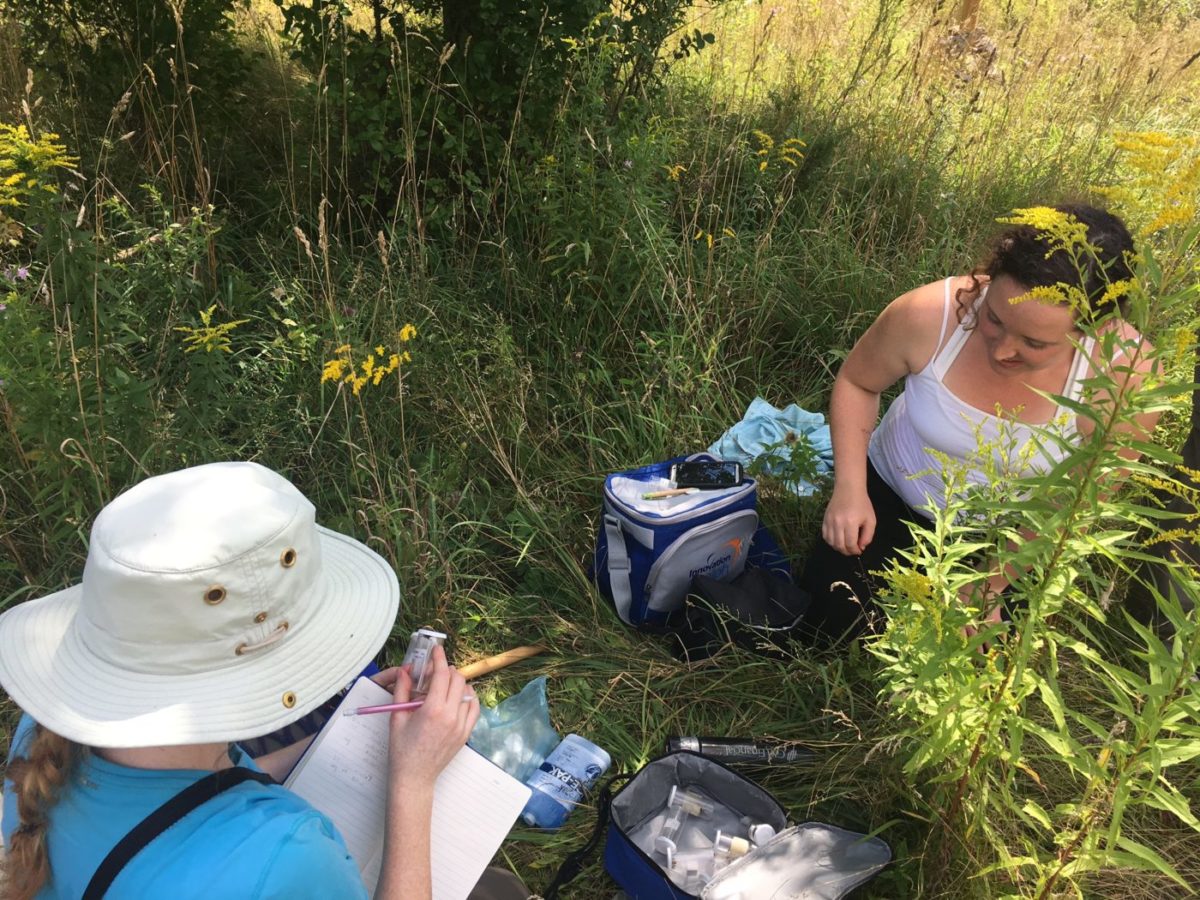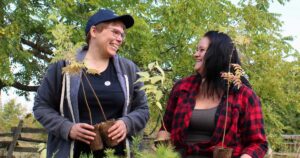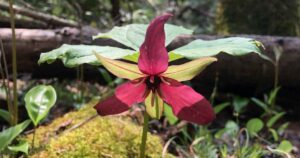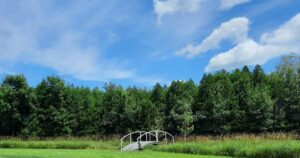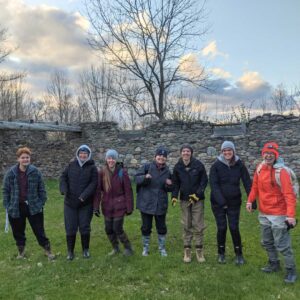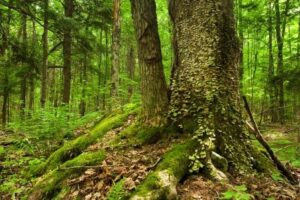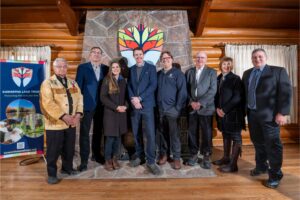Given our interest in preserving natural habitats, Kawartha Land Trust hosted a Pollination Exploration event on Big (Boyd/Chiminis) Island August 15th, 2017, along with Victoria McPhail, a pollination expert working toward a PhD in Pollination Studies.
What’s a pollinator?
A pollinator is an insect such as a bee that causes plants to make fruit or seeds. They do this by moving pollen from one part of the flower of a plant to another part; this pollen then fertilizes the plant. Only fertilized plants can make fruit or seeds, and without them, the plants cannot reproduce.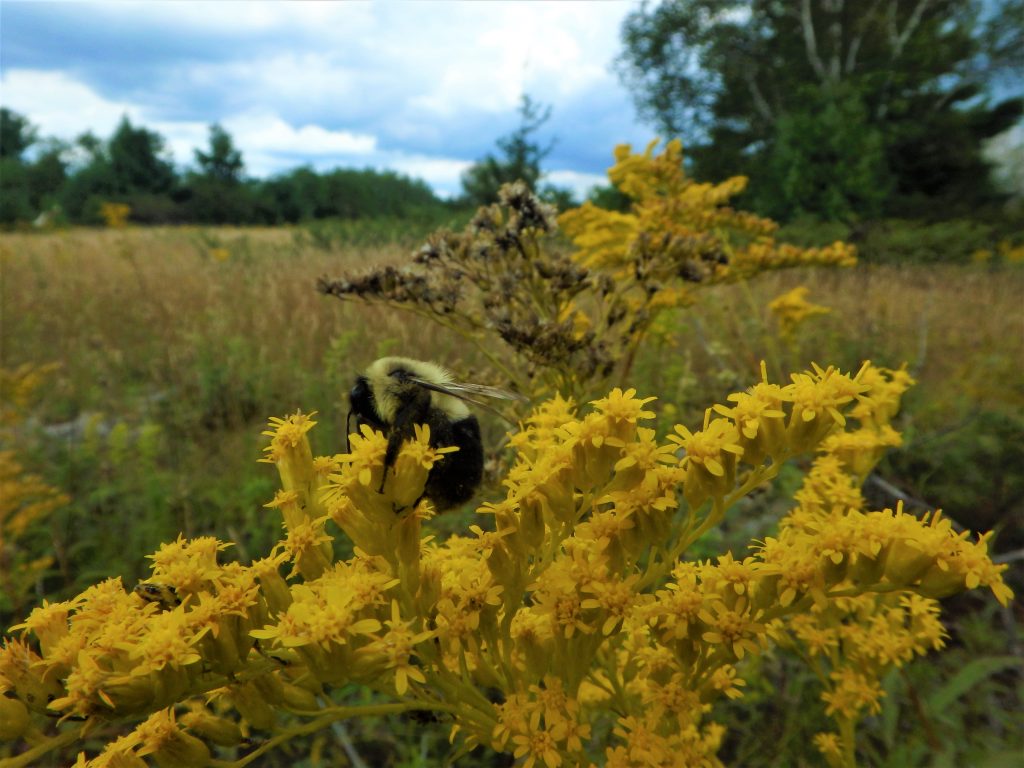
In order to pollinate a plant, the pollinator must touch parts of the flower of the plant. Because of this, animals like bees, hummingbirds and some kinds of butterflies are the best pollinators, because they get their food from the flower of the plant and brush up against parts of the flower. Bees are very important because they pollinate the largest number of plant species.
Other insects such as spiders and flies or wasps may use the flower for a hiding place, or may occasionally scavenge from the flower. These animals can also be pollinators, but they aren’t as efficient as bees at their tasks. Some kinds of plants, such as soybeans do not require pollinators at all, and some can be pollinated by wind blowing through the plants. But others, such as raspberries or alfalfa won’t reproduce or grow fruit without pollination, and many fruit and vegetable plants, such as strawberries reproduce slower and produce less fruit without pollinators around.
Why save the bees?
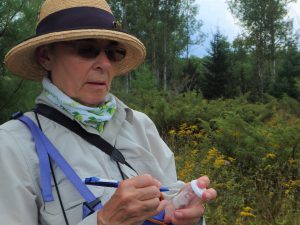
Improving the number and health of bees and other pollinators is crucial, without pollinators, much of the food we eat and the natural habitats we enjoy would not exist.
KLT is taking action now to protect pollinator habitats and increase public awareness about the very important role pollinator’s play in our environment and economy.
Apart from the great honey and goods beekeepers produce, they provide a vital service to farmers by providing honey bees to ensure there are enough bees to pollinate their crops. In Ontario 3,000 registered beekeepers operate 100,000 honey bee colonies. Ontario’s managed honey bees and bumble bees generate about $897 million of the roughly $6.7 billion in sales for agricultural crops grown in the province each year. This is equivalent to about 13 % of the province’s total annual crop value.
Commercially raised bumble bees are the primary pollinator in greenhouses. The crops they help pollinate contribute approximately $502 million to Ontario’s economy each year. In addition to managed bees, wild pollinators also make a significant contribution to the health of Ontario’s agricultural sector and the environment.
Looking for bees!
During the Pollination Exploration event on Big (Boyd/Chiminis) Island this summer, the group searched for different species of bees and with the help of Victoria, identified several types illustrating how diverse the pollinator communities are.
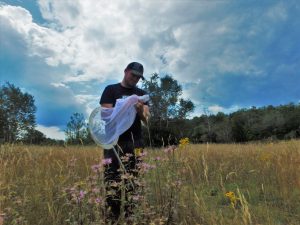
We explored the northern interior of the island that is home to a vast mosaic of meadow, old field and shrub thickets that are home to many species of plants such as Milkweed, Goldenrod and Wild Bergamot. The flowers that bloom on these plants produce different colors, smells and even tastes that attract different types of pollinators such as bees, butterflies, moths, beetles, hummingbirds and flies. Victoria and her Colleague Madeleine Lavin demonstrated how to catch bees using sweeping techniques with large insect collecting nets and then how to move the bees from the net into a small vial without harm.
The bees were then put in a cooler bag which immobilizes them for quick and easier identification as it is very challenging to identify bees while they are in flapping their wings or buzzing around! Using field guides and expert knowledge from Victoria, we were able to identify several different species of bees and pollinators on the island. Some of the bumblebee species found were Common Eastern, Brown-belted, Honeybee, Two-spotted, as well as many leaf cutter and miner bees, butterflies, flies and beetles.
Compared to the bee species we identified, Victoria displayed her personal pollinator collection with over 100 different bee species! We also had a chance to view a couple of old beehives and over wintering bee homes – who knew there was so much to learn about the habits of bees and how we can help increase their numbers.
What can you do?
You can help the KLT in our efforts to spread the word about the benefits of healthy pollinator populations and how they can improve the health of natural areas. Making your garden or outdoor space pollinator-friendly, planting an herb or flower garden and not using toxic pesticides are just a few guidelines to follow for helping out our pollinator pals! Find out more about making your garden a pollinator’s paradise at: http://www.pollinationguelph.ca/downloads
You can make ‘bee hotels’ by bunching dried hollow plant stems or drilling small tunnels about 20 cm long into wood blocks to provide a home for these bees to crawl into and stay overnight or overwinter.
- Gather hollow or pithy plant stems, or even old wood scraps, to build your bee hotel.
- Make sure they are at least 20 cm in length!
- If you are using wood scraps, drill holes 20 cm deep, with an opening of no more than a 1 cm.
- Stack wood slightly offset from one another, or gather nesting materials into a wooden box (a milk carton with the top cut off works too!)
- Place your new bee hotel off the ground to ward of predators. Enjoy!
Along with the efforts of Kawartha Land Trust to preserve lands so more pollinators may flourish, we all have an important role we can play in our own gardens. Let’s all work together to help bees and other pollinators thrive.
Posted August 24, 2017.

